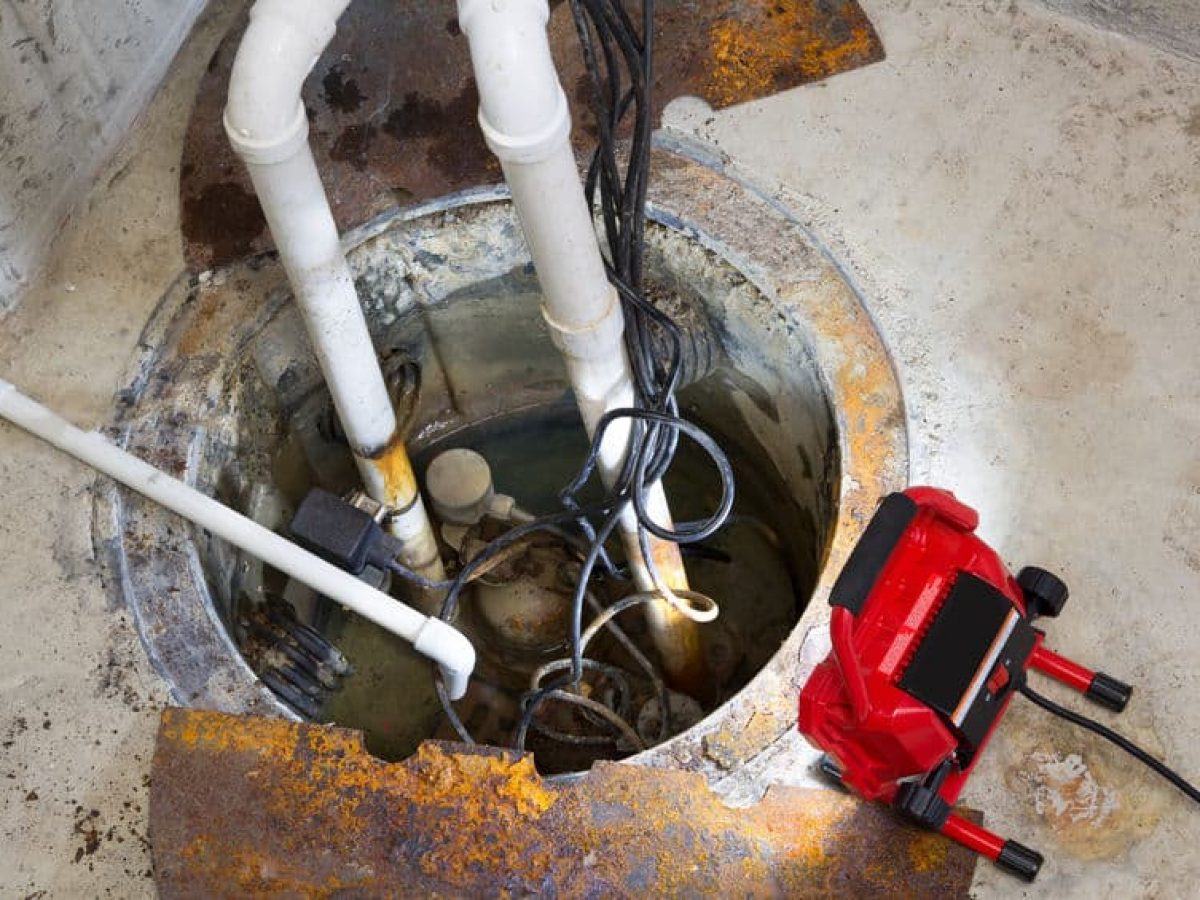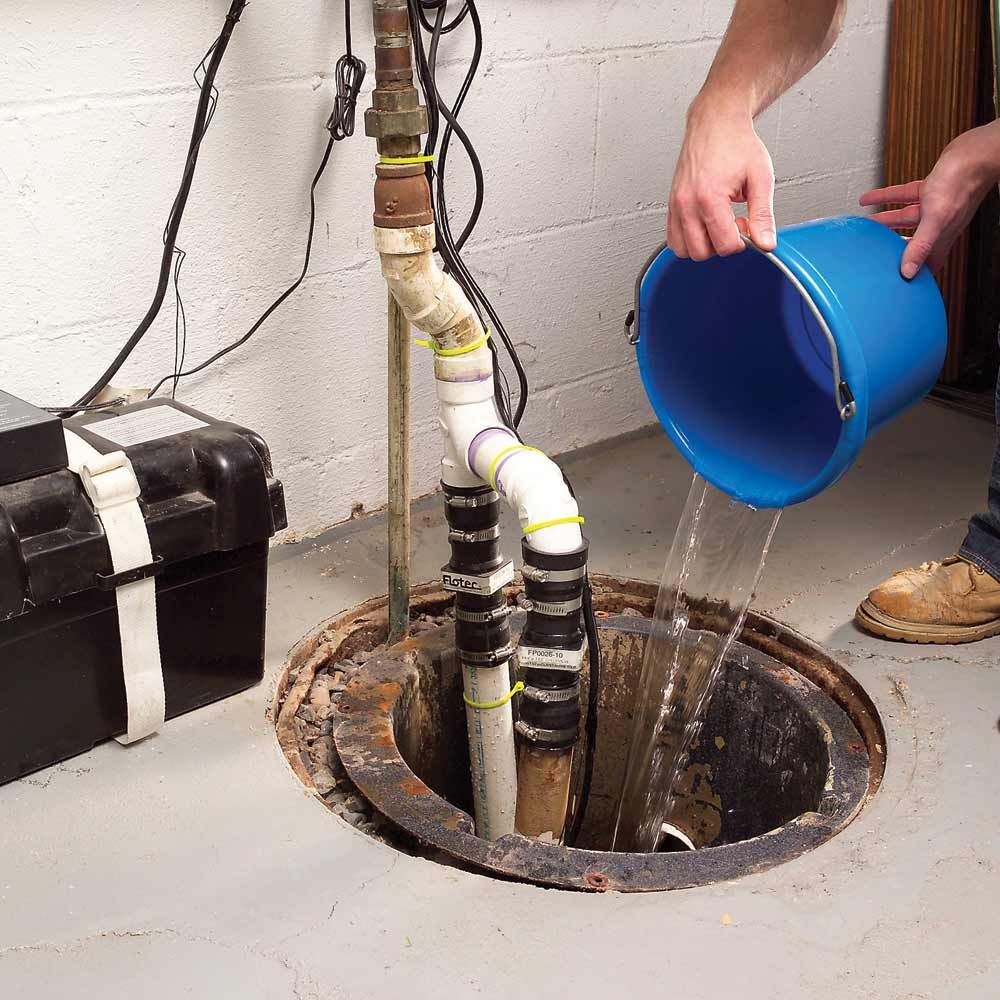Confirmed Solutions for Caring for a Sump Pump
Confirmed Solutions for Caring for a Sump Pump
Blog Article
What are your opinions about Steps to Cleaning Your Sump Pump Properly?

Sump pumps are vital elements in several homes, especially in locations prone to flooding or excessive dampness. They aid protect against water damage by effectively removing excess water from cellars or crawl spaces. Nonetheless, like any other appliance, sump pumps need normal maintenance to guarantee they work properly when required one of the most. Cleansing your sump pump is an important part of its maintenance, and recognizing exactly how to do it correctly can save you from pricey repairs and prospective catastrophes.
Intro
Maintaining a tidy sump pump is important for its correct performance and durability. Overlooking this crucial task can result in clogs, malfunctions, and inevitably, water damage to your building. Consequently, finding out exactly how to clean up a sump pump is crucial for homeowners that count on these gadgets to maintain their basements completely dry and secured.
Indicators of a Dirty Sump Pump
Recognizing when your sump pump needs cleansing is important for preventing prospective malfunctions. Some typical signs that show a dirty sump pump include strange noises during operation, lowered water flow, and noticeable debris in the pit. If you observe any one of these signs, it's necessary to cleanse your sump pump promptly to prevent any kind of more problems.
Planning for Cleaning
Prior to you start cleaning your sump pump, it's important to take some security precautions. Start by shutting down the power to the pump to avoid any kind of electrical crashes. Additionally, wear proper safety gear, such as gloves and goggles, to safeguard on your own from dirt, debris, and possible microorganisms.
Comprehending the Sump Pump
Prior to diving right into the cleansing process, it's vital to have a basic understanding of exactly how a sump pump functions. Normally set up in a pit or basin below the basement flooring, a sump pump consists of several essential components, including a pump, a float button, and a discharge pipeline. When water collects in the pit, the float switch triggers the pump, which then pumps the water out with the discharge pipe, away from the building's structure.
Detailed Overview to Cleansing a Sump Pump
Turning off the Power
Begin by detaching the power supply to the sump pump to stop any crashes while cleaning.
Checking for Proper Functioning
Before reinstalling the pump, do a quick test to ensure that the float switch activates the pump correctly. Put some water right into the sump pit and observe the pump's procedure. If every little thing is functioning correctly, you can rebuild the pump and reconnect the power supply.
Removing Debris and Dirt
Use a bucket or an inside story to eliminate any kind of visible debris, dirt, or sediment from the sump pit. Dispose of the debris effectively to avoid it from blocking the pump or the discharge pipeline.
Cleaning the Pump and Float Change
As soon as the pit is free from particles, very carefully remove the pump from the pit. Examine the pump and the float button for any kind of indications of damages or wear. Utilize a soft brush or cloth to clean the surface areas and remove any built up grime.
Flushing the System
After cleaning the pump and float button, flush the sump pit with clean water to eliminate any kind of continuing to be dirt or sediment. This will aid ensure that the pump runs smoothly and effectively.
Upkeep Tips to Maintain Your Sump Pump Clean
In addition to routine cleansing, there are a number of upkeep tips you can follow to maintain your sump pump in optimal condition:
Verdict
Cleaning your sump pump is an important element of its maintenance and guarantees that it operates efficiently when you need it one of the most. By following the actions laid out in this overview and incorporating regular upkeep into your routine, you can prolong the lifespan of your sump pump and shield your home from water damages.
6 STEPS ON HOW TO CLEAN A SUMP PUMP PROPERLY
UNDERSTANDING SUMP PUMPS
Your sump pump plays a crucial role in protecting your home by managing and removing excess water. It primarily functions as a “shield”, guarding your basement against the damaging effects of water accumulation. The pump is housed in a sump pit in the lowest part of your basement, and its job is to pump out any water that collects there.
During heavy rainfalls or when snow melts rapidly, water can infiltrate your basement, posing potential risks like flooding, structural damage, and harmful mold growth. Here, the sump pump springs into action, pumping out the intruding water and directing it away from your home.
SAFETY FIRST
Before cleaning, remember to prioritize safety. Disconnect the sump pump from the power source to prevent any accidental electric shocks. Also, wear sturdy gloves to protect your hands from any sharp or dirty components within the pump.
REMOVE THE SUMP PUMP
After ensuring your safety, the next step is to remove the sump pump from its pit. Doing this might require careful maneuvering as you don’t want to damage any pump components. Once removed, clean the sump pit to remove any accumulated debris or sludge.
INSPECT THE PUMP
Inspect the pump for any visible signs of wear or damage. Check the power cord, float switch, and impeller housing. If any components look worn out or damaged, consider replacing them to ensure optimal performance.
CLEAN THE PUMP
Thoroughly clean the pump with warm, soapy water. Make sure to rid it of any dirt, gravel, or other debris that might impede its performance. You can use a toothbrush to clean the small, hard-to-reach parts of the pump.
REINSTALL THE SUMP PUMP
Reinstall the pump into the sump pit Make sure it’s positioned correctly to remove the water effectively Once it’s back in place, reconnect it to the power source TEST THE PUMP
Finally, pour some water into the pit to ensure the pump works correctly. It should start automatically and begin pumping out the water; if it doesn’t, check the power source and the positioning of the pump.
Remember, while cleaning your sump pump is an essential part of home maintenance, hiring a professional plumber for a thorough inspection and cleaning at least once a year is also important. This will ensure that your pump is in optimal condition, ready to protect your home from potential water damage.
BEST PRACTICES FOR CLEANING SUMP PUMP DISCHARGE PIPES
Regular Inspection: Regularly inspect your discharge pipes, especially during heavy rainfall or snowmelt periods. Look for any signs of blockage or damage. Early detection of problems can prevent serious issues down the line. Periodic Cleaning: Over time, sediment and debris can accumulate in the discharge pipes, impeding the flow of water. Regular cleaning helps keep the pipes clear and functioning efficiently. You can use a high-pressure water jet to effectively clean the pipes. Insulation During Winter: In colder climates, discharge pipes can freeze, blocking the outflow of water. Protect your discharge pipes from freezing temperatures by insulating them with foam pipe insulation. This will ensure the sump pump can continue to discharge water even in freezing conditions. Proper Positioning: The discharge pipe should be positioned to direct water away from your home’s foundation. Improper positioning can lead to water seeping back into the basement. Ensure the pipe is long enough and angled correctly. Installation of a Check Valve: A check valve prevents water from flowing back into your sump pit after the pump has pushed it out. Installing a check valve helps maintain the efficiency of your sump pump and reduces the risk of flooding. Minimize Pipe Turns: Every curve or turn in the discharge pipe can decrease the efficiency of water flow. By minimizing turns and bends in your discharge pipe, you can increase the efficiency of your sump pump. https://www.fullspeedplumbing.com/how-to-clean-a-sump-pump-properly9999/

I'm just very fascinated by Steps to Cleaning Your Sump Pump Properly and I really hope you enjoyed reading the entire blog entry. Are you aware of somebody else who is curious about the niche? Why not promote it. I appreciate reading our article about How To Effectively Clean A Sump Pump.
Or Book Technician Here Report this page